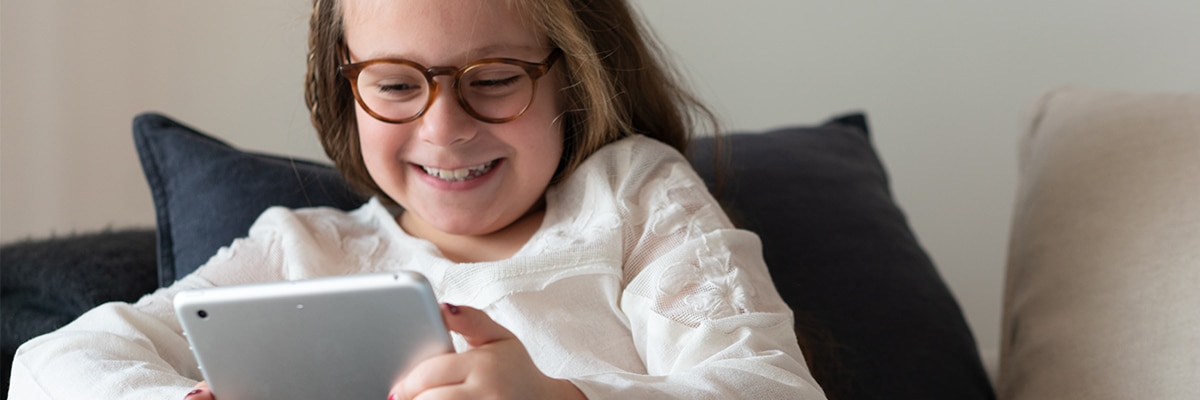In the EBD Blog
How to know if your child needs glasses
Kids can have vision issues just like adults. Vision problems, if undiagnosed, can have a major impact on your child’s life. Poor vision can negatively affect their mood, performance at school and overall behavior. Depending on what kind of vision problems your child is experiencing, glasses may be the perfect solution.
Does my child need glasses?
The easiest and most effective way to answer that question is to schedule an eye exam. It’s recommended for young children to have their vision checked every couple of years until the age of 6 when they start having annual eye exams. Until that age, your child should have a doctor check their vision at the 1 and 3 year mark.
A child’s vision isn’t finished developing until they’re 8 years of age. While their eyesight is still changing, parents should take note of signs that indicate a child’s need for eyeglasses. These signs include frequent headaches, excessive tears, squinting and eye rubbing.
Below are four common scenarios that indicate your kiddo could benefit from a pair of specs.
1) My child loses their place while reading It can be difficult for a kid with astigmatism or crossed eyes (strabismus) to keep their place while reading. Both of these vision issues can cause their eyes to distort what they’re looking at, including the words on a page.
It’s not so simple to catch these issues while your kids are young, but it helps to have them read out loud to you. This not only helps their development, but it can also bring any reading difficulties or underlying vision problems they have to your attention.
2) My child sits very close to the screen This behavior is common among children with nearsightedness (myopia), and is pretty easy to spot. You’ll notice your child sitting very close to the TV in order to see it clearly, or holding a book really close to their eyes when they read. This often means they have a hard time focusing on things that are in their intermediate or distant vision.
Prescription eyeglasses offer a solution to your child’s nearsightedness, which is a fairly common refractive error. With the right lenses, your child will no longer have to strain their eyes to see things farther than an arm’s length away.
3) My child uses their finger to read In the early stages of learning to read, it’s common for children to physically point to each word as they move across the page. As your child gets older, if they continue to trace the words on the page with their finger, it might be a sign of lazy eye (amblyopia).
With lazy eye, your child’s vision can feel crowded, making the words on the page hard to distinguish. Tracing them with a finger often makes it easier to focus. In minor or moderate cases of lazy eye, an eye doctor might recommend eyeglasses or contacts to help your child see more clearly, but in more severe cases, they might need an eye patch, eye exercises or even surgery to get their eyes aligned.
4) My child likes to cover one eye If you catch your kid covering one eye while they play on a tablet, it’s unlikely that they’re trying to live out their dreams of being a pirate. Covering one eye when looking at a screen or reading a book could indicate that your child sees out of one eye better than the other — they’re covering the eye that makes it harder to focus.
Amblyopia — lazy eye — usually presents itself in infancy or early childhood. A good way to test for it at home is to cover your child’s eyes one at a time. If they start fussing, then you’ve probably covered up their “good eye.” Prescription eyeglasses may offer a solution for your child, depending on the severity of the problem.
If your child is showing any symptoms of vision problems, or has yet to get an eye exam, book an appointment to restore their vision and their confidence as soon as possible.
